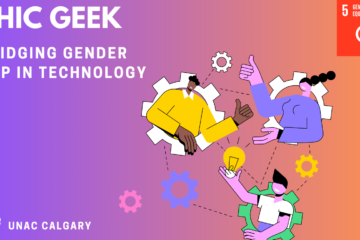
By: Josephine Mary
In a recent conversation with an ESG professional, I took a pause and reflected on my education choices which I took based on the knowledge and resources I had. After 10 years, a part of me wondered about the massive education opportunities my fellow speaker had known which I was unaware of in the same era. The only difference was the access to such information through technology.
That is when it hit me. Access to technology can make such a huge difference especially in the lives of women and girls who are declined basic digital equality. With this connotation, let me introduce the theme for this year’s International Women’s Day: Digitall – Innovation and technology for gender equality.
The theme calls for individuals, corporates and organizations to support women towards gender equality through and to technology.
The Digital Divide and Its Impact On Women and Girls
Digital divide refers to a gap or unequal access to technology like smartphones, computers, internet etc. In today’s blog, let us see in depth about how women and girls face inequality in access to technology, solutions to tackle the challenge and actions everyone can take to reduce the digital divide.
When women and girls do not have access to innovation and technology it hinders their growth, takes away the opportunity to explore and grow further. The 2022 Gender snapshot report by the UN shows that women’s exclusion from the digital sphere has shaved $1 trillion off the GDP of low- and middle-income countries. Bridging the gender gap in technology can help massively in sustainable development.
The Four Primary Issue Based Solutions To Close The Digital Divide
UN Women in its explainer series has listed down four issue based solutions to close the digital divide.
1. Close all gaps in digital access and skills
While technology is benefiting a lot of women in many countries, there are still millions of women and girls from marginalized groups like rural women with no modern infrastructure, women with disabilities and older women who do not have access to it. Ensuring technology along with access to good infrastructure and basic facilities can go a long way in bridging the gap.
The UN women calls for governments, policy makers, corporates, nonprofits and civic societies to contribute in making technology accessible to all women and girls. Some of the ways include investing in programs and initiatives, digital literacy programs and subsidizing computers and smartphones to make it affordable and accessible.
2. Support women and girls in STEM
According to the UNESCO science report women and girls remain a minority in STEM representing only 28 per cent of engineering graduates, 22 percent of artificial intelligence workers and less than one third of tech sector employees globally.
The gap stems from multitude of factors like stereotypes on technology not for women, not sufficient resources and access to pursue a career in STEM and the huge pay gap between men and women professionals in the field. This can be overcome by fair pay, making the resources accessible to all educators in schools especially the rural areas and increasing access to digital literacy.
3. Create tech that meets the needs of women and girls
The UN women highlights that technology reflects its creators. When women and girls are left out of innovation and tech space, the digital tools do not reflect their needs. For example, digital tools that promote sexual and reproductive health not created by women become the outcome of decision making that does not include their voices and views.
At the global level, this scenario also means that the data contributions from women is far less which leads to an imbalance. To face this challenge, we need regulatory reform and digital governance from governments and the tech sector that ensures mandate monitoring mechanisms such as gender impact assessments, and data use transparency through mechanisms like mandatory artificial intelligence audits.
4. Address technology facilitated gender based violence
Technology facilitated gender based violence can be understood as any act of violence committed, assisted or aggravated by the use of ICT on the basis of gender. The UN women strongly points out that women who face online violence are prone to offline tangible harm like physical, psychological, social and economic. There is a real continuum between online and offline due to advanced technology leading to trafficking and abuse.
This poses a higher risk for women who face intersecting forms of discrimination, including women of color, women with disabilities, LGBTIQ+ people, women in the public eye—journalists, politicians and women’s rights defenders who face more hate speech than their counterparts.
In order to solve this, we need more legal frameworks made in coordination with women organizations, centered around human rights and survivor informed approach. Teaching digital citizenship instilled with empathy and ethical digital use to boys and men to become advocated for digital equality can help to mitigate the issue.
How A Business or Non profit Can Use Technology To support Digital Equality
Corporates and development organizations hold a massive power when it comes to using technology and innovation for digital equality. Here are some of the effective ways through which we can achieve them.
- Nonprofits and businesses can use technology to create online support networks for women and girls to have access to resources and support.
- Technology can be used to create mentorship programs between women in the corporate sector and girls in the community.
- Organizations can help in creating online forums and discussion groups for women and girls to share experiences and gain useful knowledge.
- Creating and sponsoring online courses and tutorials that teach women and girls about financial literacy and digital literacy.
- Conducting technical boot camps to adolescent girls helps them to explore tech and make a career choice out of it.
- Sponsoring /supporting technical access to the vulnerable and minority communities who have no/limited access to innovation and technology.
- Organizations can engage in policy advocacy to bring in a more inclusive digital space.
How As An Individual You Can Contribute To Bridge The Digital Divide In Your Circle/Community
- Advocate for policies that promote equal access to technology for women and people of all gender identities.
- Develop educational materials and resources that teach people about the importance of gender equality and the role of technology in achieving it.
- If you are from Tech space, create a peer-mentoring program or a community to help women learn new technologies and build their confidence.
- Connect women in technology who are out of the workforce with organizations working for women in Tech.
- Be non-judgmental and help when you come across someone who has/is experiencing online violence
In a world shaped by technology and innovation everyday, it is only fair to ensure women and girls have an equal say and involvement for a better tomorrow. This International Women’s Day let us collectively put the focus on to emphasize inclusive technology and reduce the digital gap. With the hope that the above action points help in achieving the same, on behalf of United Nations Association Canada-Calgary Branch, happy International Women’s Day.
If you’d like to stay current with our blog posts, events, volunteer opportunities and other news from our Branch, please consider subscribing to our mailing list at the link below. Your contact information will not be shared, and will only be used for periodical updates from UNAC-Calgary.
https://unaccal.com/subscribe/


